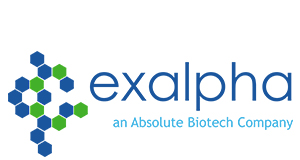Rabbit anti Human Toll-like receptor 5 (TLR5) (CT)
Rabbit anti Human Toll-like receptor 5 (TLR5) (CT), Polyclonal, IgG
SKU
EXAX1813P
Packaging Unit
100 µg
Manufacturer
Exalpha Biologicals Inc
Availability:
loading...
Price is loading...
Background: Toll-like receptors (TLRs) are evolutionarily conserved pattern-recognition molecules resembling the toll proteins that mediate antimicrobial responses in Drosophila. These proteins recognize different microbial products during infection and serve as an important link between the innate and adaptive immune responses (1,2). The TLRs act through adaptor molecules such as MyD88 and TIRAP to activate various kinases and transcription factors (3) so the organism can respond to potential infection. TLR5 recognizes flagellin from both Gram-positive and Gram-negative bacteria and will cause the activation of NF- B, leading to the activation of TNF-alpha; and other cytokines (4). A common TLR5 stop codon polymorphism that disrupts TLR5 signaling is associated with susceptibility to LegionnairesÕ disease and demonstrates the importance of TLR5 in the innate immune response (5).
Positive Control: Found in the membrane, TLR5 is hghly expressed in ovary and in peripheral blood leukocytes, especially in monocytes, less in CD11c+ immature dendritic cells. Also detected in prostate and testis.6.
Immunogen: Rabbit polyclonal TLR5 antibody was raised against a peptide corresponding to 15 amino acids near the carboxy terminus of human TLR5.
Purification Method: Antigen Immunoaffiinity Purification.
Formulation: Provided as solution in phosphate buffered saline with 0.02% sodium azide.
References: 1) Takeda K, Kaisho T, and Akira S. Toll-like receptors. Annu. Rev. Immunol. 2003; 21:335-76.
2) Janeway CA Jr. and Medzhitov R. Innate immune recognition. Annu. Rev. Immunol. 2002; 20:197-216.
3) McGettrick AF and O’Neill LAJ. The expanding family of MyD88-like adaptors in Toll-like receptor signal transduction. Mol. Imm. 2004; 41:577-82.
4) Hayashi F, Smith KD, Ozinsky A, et al. The innate immune response to bacterial flagellin is mediated by Toll-like receptor
5) Nature 2001; 410:1099-103. 5. Hawn TR, Verbon A, Lettinga KD, et al. A common dominant TLR5 stop codon polymorphism abolishes flagellin signaling and is associated with susceptibility to legionnaires’ disease. J. Exp. Med. 2003; 198:1563-72.
6) UniProtKB/Swiss-Prot entry O60602, http://ca.expasy.org/uniprot/O60602, Accessed February 7, 2007.
UniProt: O60602.
Caution: This product is intended FOR RESEARCH USE ONLY, and FOR TESTS IN VITRO, not for use in diagnostic or therapeutic procedures involving humans or animals.
Positive Control: Found in the membrane, TLR5 is hghly expressed in ovary and in peripheral blood leukocytes, especially in monocytes, less in CD11c+ immature dendritic cells. Also detected in prostate and testis.6.
Immunogen: Rabbit polyclonal TLR5 antibody was raised against a peptide corresponding to 15 amino acids near the carboxy terminus of human TLR5.
Purification Method: Antigen Immunoaffiinity Purification.
Formulation: Provided as solution in phosphate buffered saline with 0.02% sodium azide.
References: 1) Takeda K, Kaisho T, and Akira S. Toll-like receptors. Annu. Rev. Immunol. 2003; 21:335-76.
2) Janeway CA Jr. and Medzhitov R. Innate immune recognition. Annu. Rev. Immunol. 2002; 20:197-216.
3) McGettrick AF and O’Neill LAJ. The expanding family of MyD88-like adaptors in Toll-like receptor signal transduction. Mol. Imm. 2004; 41:577-82.
4) Hayashi F, Smith KD, Ozinsky A, et al. The innate immune response to bacterial flagellin is mediated by Toll-like receptor
5) Nature 2001; 410:1099-103. 5. Hawn TR, Verbon A, Lettinga KD, et al. A common dominant TLR5 stop codon polymorphism abolishes flagellin signaling and is associated with susceptibility to legionnaires’ disease. J. Exp. Med. 2003; 198:1563-72.
6) UniProtKB/Swiss-Prot entry O60602, http://ca.expasy.org/uniprot/O60602, Accessed February 7, 2007.
UniProt: O60602.
Caution: This product is intended FOR RESEARCH USE ONLY, and FOR TESTS IN VITRO, not for use in diagnostic or therapeutic procedures involving humans or animals.
| SKU | EXAX1813P |
|---|---|
| Manufacturer | Exalpha Biologicals Inc |
| Manufacturer SKU | X1813P |
| Green Labware | No |
| Package Unit | 100 µg |
| Quantity Unit | STK |
| Reactivity | Human, Mouse (Murine) |
| Clonality | Polyclonal |
| Application | Western Blotting, Immunocytochemistry |
| Isotype | IgG |
| Host | Rabbit |
| Product information (PDF) | Download |
| MSDS (PDF) | Download |

 Deutsch
Deutsch






